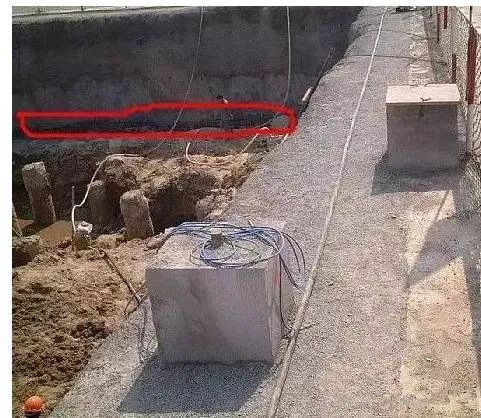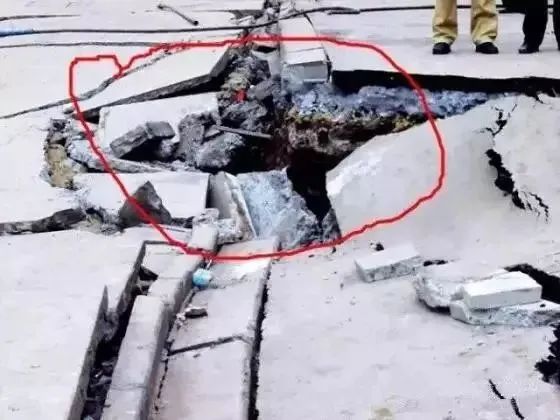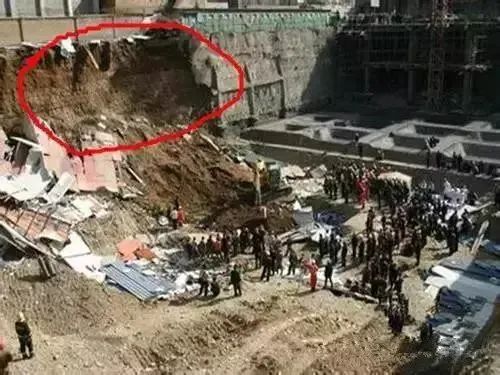【Excerpts】Common problems and countermeasures in foundation pit monitoring
Browse services
- Petroleum and Gas
- 【Excerpt】High pressure jet grouting construction technology
- 【Excerpt】How to construct slope anchor cable?
- HDL-60S multi-function drilling rig shipped to Singapore
- 【Excerpt】Why do we need to test piles before pile foundation construction?
- We are the one-stop construction problem solver
- 【Holiday arrangement】Dragon Boat Festival
- 【Excerpt】The "Seven-Character Guideline" for Ground Treatment: A Comprehensive Interpretation!
- 【Excerpt】What is the difference between cement mixing pile and high pressure jet pile?
- 【Construction Case】HDL-200C top drive drilling rig for water stopper curtain of overseas dam
- 【Excerpt】What to do with a broken pile
- Holiday arrangement
- Our Drilling Rig: Client Success Story
Although foundation pit engineering support technology has achieved a lot of successful experience in different areas and under different geological conditions, and even some have reached a very advanced level, there are still some problems that need to be further considered or improved to meet the needs of the current stage of construction.
The problems that often exist in the construction process of deep foundation pit engineering support and the corresponding countermeasures are mainly the following.
Common quality problem 1: displacement
Displacement of the support structure to the inner side of the pit, resulting in ground settlement behind the piles and cracks in nearby houses, and sliding and loss of stability of the side slope.

Preventive measures:
1、The cross-section of the retaining piles and the depth into the soil of the supporting structure should be strictly calculated to prevent the omission of additional loads such as piles of soil on the ground at the top of the piles, moving machinery, transport vehicles and piles of materials.
2、The infill piles must be tightly combined with the water-resisting rotary spray piles to form a closed water curtain to prevent the soil behind the piles from flowing into the pit in large quantities under the action of dynamic water pressure.
3、The construction of the entire support system, including soil anchors and pile top ring beams, should be completed before the excavation of the foundation pit, and the retaining piles should reach strength to ensure the strength and overall stiffness of the support structure and reduce deformation.
4、The anchor construction must ensure that the anchor rods penetrate deep into the reliable anchorage layer.
5、During construction, management should be strengthened to avoid massive piling and parking of excavation machinery and transport vehicles on the supporting structure.
6、Precipitation should be carried out before excavation of the pit to reduce soil pressure and water inflow into the pit on the side of the pile, which can cause displacement of the pile.
7、When displacement is monitored, the pile should be unloaded and made up in the larger displacement area or the soil should be reinforced with cement pressure slurry in that area.
Common quality problem 2: Pipe gushing and sand flow
When a foundation pit is excavated, the soil at the bottom of the pit produces flow, which gushes into the pit with the groundwater flow from the bottom or around the pit, causing subsidence of the surrounding ground and cracks in the building.

Preventive measures:
1、Geological surveys should be strengthened before construction to find out the soil conditions.
2、It is desirable that the retaining piles penetrate the layer of fine powdered sand at the bottom of the pit.
3、When there is a gap between retaining piles, rotary spray water stop piles should be provided at the back to block water to avoid a gap in the flow of water, resulting in soil erosion and gushing into the foundation pit.
4、The depth of the pile embedded in the bottom of the pit shall be determined by calculation and shall be such that the density of water immersion of the soil particles is greater than the dynamic water pressure on the side of the pile.
5、Water stop piles should be designed so that they are tangential to the retaining piles and remain tightly integrated to improve the stiffness of the support and play the role of a curtain wall.
6、The construction should start with effective precipitation of the pit using well points or deep wells.
7、Large machinery driving and mechanical excavation should prevent damage to water supply and drainage pipes, found rupture should be repaired in a timely manner.
Common Quality Problem 3: Collapse
The support structure failed during the excavation of the foundation pit and the slope collapsed in a large area with local instability.

Preventive measures:
1、The retaining piles should be designed with sufficient stiffness and strength and be connected as a whole by a top ring beam.
2、The soil anchors should be deep within the solid soil and grouted tightly.
3、The retaining piles should have sufficient depth into the soil and be embedded into the solid soil layer to ensure the overall stability of the supporting structure.
4、The excavation of the foundation pit should be preceded by an effective method of precipitation to reduce the groundwater to below 0.5m below the base of the excavation.
5、Should be prevented with the excavation with the support, especially in accordance with the design of the construction procedures, shall not arbitrarily change the force state of the support structure or in the support structure on the arbitrary increase in support design is not considered a large number of construction load.
The necessary monitoring should be carried out for important foundation works, with the following monitoring.
1、Deformation of the supporting structure.
2、Ground deformation around the foundation pit.
3、Deformation of adjacent works and underground installations.
4、Groundwater table.
5、Leakage, water bubbling, scouring and pipe surges.
The following information shall be available at the time of acceptance of the foundation support:
1、Construction records and as-built drawings.
2、Amap of the location of the side slope works in relation to the surrounding buildings.
3、Factory certificates of conformity and re-inspection reports of raw materials.
4、Concrete strength test reports, mortar test block compressive strength test reports.
5、Anchor pull-out test reports.
6、Deformation monitoring reports for slopes and surrounding buildings.
7、Design change notices, major issue handling documents and technical negotiation records.
——
Disclaimer: We respect originality and share it, and appreciate the hard work and creativity of each author. We are committed to protecting the copyright of authors, the sources of content have been marked with the source, only for knowledge dissemination and sharing, no other commercial profit role, if there is any infringement, please contact us to remove.
